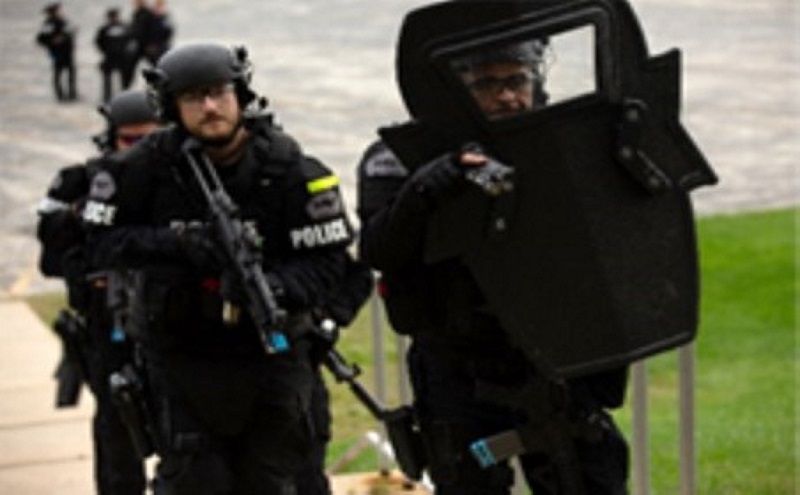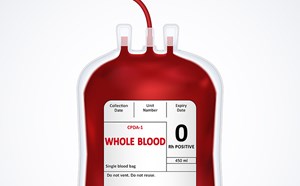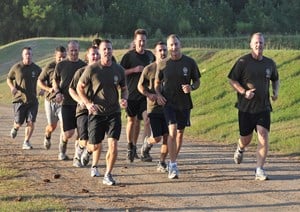
Protecting Public Safety Personnel through Standards and Verification
ASTM International is one of the world’s largest standards developing organizations with a membership of over 30,000, representing 150+ countries. Over 12,000 ASTM standards are published each year and are currently being used worldwide to improve product performance, quality, and safety.
Of the over 140 standards developing committees within ASTM, Committee E54 on Homeland Security Applications develops standards written specifically for the Public Safety community. This committee comprises end users, manufacturers, testing and certification experts, standards developers, and many more. To name a few, they are police officers, firefighters, military personnel, college professors, engineers, doctors, and testing lab technicians. These subject matter experts come together and openly collaborate to develop standards which address the protective capability of equipment intended to mitigate the risk of duty-related injuries or death within the field of public safety.
In general, Public Safety personnel rely heavily on their equipment during the execution of their work assignments. This is true for many professions, where the “tools of the trade” can mean the difference between success or failure for the task at hand. However, in the case of the emergency responder, it quite often means the difference between life or death. It can be a game changer for the first responder if their riot helmet does not perform as expected during an incident involving civil unrest, or worse yet if a ballistic shield fails during a lethal force encounter. If the emergency personnel responding to the scene are not appropriately protected by their equipment, this can lead to the responder unintentionally becoming part of the “problem” as compared to part of the “solution”. This is what makes the ASTM International Committee E54 on Homeland Security Applications such a vital component to the first responder community. This group of volunteers is constantly working to ensure that the protective equipment being used by our first responders will perform as desired by the end user, as needed by the public safety community, and as intended by the manufacturer.
A good representation of this is highlighted in the case of the non-pneumatic tourniquet performance standard that is currently under development. The need for this standard was identified by the public safety community. The actual standard is being developed by the end users, medical field professionals, standards developers, product manufacturers, and additional interested parties. The common goal of these volunteers is to develop a non-biased fit-for-purpose performance standard that will ultimately benefit the end user by providing them the assurance that their equipment is performing as needed and as expected.
The non-pneumatic tourniquet standard is not the only standard currently being worked on by Committee E54. Several other public safety standards currently being developed include:
- WK82362, Specification for Protective Helmets Worn by Pedestrian Roadway Workers
- WK70043, Specification for the Safety of Targeted Individuals During Deployment of Less Lethal Impact Devices Used by Law Enforcement
- WK65713, Specification for Torso and Limb Protection Worn by Civil Disturbance Unit Officers
Once a developed standard is approved, the standard is then published and made available to the responder community. ASTM has published many standards designed to assess the performance of protective equipment, including those listed below:
- ASTM E3368, Specification for Ballistic-Resistant Helmets Worn by U.S. Public Safety Officers
- ASTM E3347, Specification for Ballistic-Resistant Shields Used by Law Enforcement Officers
- ASTM E3342, Specification for Nonballistic-resistant Helmets Specifically Designed to be Worn by Law Enforcement and Corrections Officers When Maintaining Order in Violent Situations [Note: These helmets are commonly referred to as public order helmets or riot helmets.]
- ASTM E3236, Specification for Ballistic-resistant Barriers Used in Homeland Security or Public Safety Applications
- ASTM E3113, Specification for Ballistic-resistant Vehicle Door Panels Used by Public Safety Agencies
- ASTM E3109, Specification for Protective Gloves Worn by Law Enforcement and Corrections
In addition to the development and publishing of standards, ASTM International has taken another step to establish an ASTM Verification Program to evaluate and verify that products meet the relevant standard.
Anna Seiple is the program director for the Safety Equipment Institute (an ASTM affiliate) and manages this program. Seiple explains, “The standards form the basis for the new ASTM Verification Program intended to have an independent, third party organization evaluate a product against the appropriate standard. Those products that are successfully verified will be included in an online listing of verified products (www.seinet.org), will receive authorization to have the ASTM Verification Mark placed on them, and will undergo annual testing to assess continued compliance.” Look for this mark on products:
Chief Tom Nolan, Upper Merion Township PA Police Chief and Public Safety Director, feels that this program will be very beneficial for law enforcement and states, “The primary benefit of verification is that it gives the end user a high level of confidence in the product’s performance. Since the cost of verification is much less than certification, manufacturers are more likely to participate in the program, and the costs of verification, that could ultimately be passed on to purchasers, will be minimal.” Other benefits are listed below:
- For purchasers, the program will greatly simplify the purchasing process by eliminating (or at least reducing) challenges caused by (1) unverified supplier claims of equipment performance; (2) incomplete, confusing, or misleading information about equipment performance; and (3) false advertising about equipment performance. A purchaser can require ASTM verification as a condition for purchasing a product and then check the online verified products list to see whether the product(s) being offered by a supplier has been verified.
- For manufacturers, the program will enable them to distinguish their ASTM-verified products from those that do not meet standards.
- For end users, the program allows them to check their individual helmets or shields to see whether the ASTM-verified Mark is present.
A diverse team of stakeholders collaborate to develop each new standard. Because of the broad stakeholder support, it is expected that the verification program will be required by law enforcement purchasers, cooperative contracting programs (such as NASPO ValuePoint), and end users.
The ASTM Verification Program officially began in early 2023 with public order helmets, ballistic helmets, and ballistic shields. Other law enforcement products expected to be added to the ASTM Verification Program in the future include protective helmets for pedestrian roadway workers, less lethal impact rounds, public order shields, and public order torso and limb protection. For more information, contact Anna Seiple at aseiple@seinet.org or go to www.seinet.org.
Committee E54 has also developed standard guides to assist public safety departments with issues that cannot be addressed by equipment performance standards. ASTM makes these standards available at no cost to responders and public safety departments (Contact Kevin Shanahan with a request at kshanahan@astm.org). Several important standards are listed below:
- ASTM E3003,Practice for Body Armor Wearer Measurement and Fitting of Armor
- ASTM E3195, Guide for Body Armor Program Management
- ASTM E3348,Guide for Body Armor for Non-Law Enforcement First Responder Applications
ASTM Committee E54 welcomes the participation of responders and other stakeholders in the development of standards. The committee typically meets twice each year in person (at different locations), but most work is done through virtual meetings. If you are interested in the opportunity to provide a safer future for our first responders and public safety personnel through the development of standards, please contact Kevin Shanahan or go to www.astm.org for additional information.
Patricia Knudson
Notation: Reprinted with permission of ASTM International and Standardization News.



